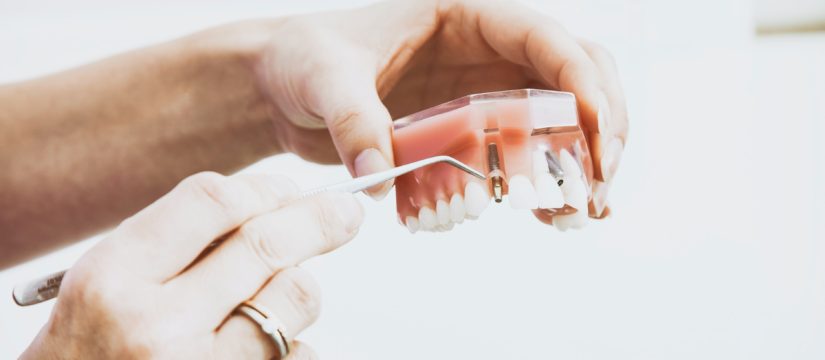
What Is Gum Disease Treatment?
Gum Disease is the leading cause of tooth loss and is completely preventable and treatable. Periodontal disease can be treated with non-surgical and surgical options. Typically, the disease is routinely treated by scaling and root planning clinching by a licensed hygienist. Other treatment options are available to help prevent the spread of infection and help reduce the size of the gum pocket formed around the teeth as part of the disease.
What Are The Non-Surgical Treatments For Gum Disease?
Professional Dental Cleaning: During a general checkup, your dentist or dental hygienist removes the plaque and tartar that forms and hardens on the surface of the tooth. (Plaque is a ‘Pl film covering the teeth, which can lead to cavity and gum disease. Tartar teeth have hard, yellowish dark deposits,) when plaque and tartar reach this level of build-up If they are, they can only be removed. Professional cleaning. Cleansing removes plaque and tartar from the top and bottom of the gum line of all your teeth. If you have some symptoms of gum disease, your dentist may recommend professional dentistry more than twice a year.
Scaling And Root Planning: This is a deep cleaning, the non-surgical procedure performed under local anesthesia. Rigid fillet and tartar (also known as stone) are scaling away from the top and bottom of the gum line. Also, any rough spots of the root of the tooth are made smooth. Lubricating the rough spots removes bacteria and provides a clean surface for the gums to reheat the teeth.
Adapted: Sometimes inflammation of plaque and gum tissue can be controlled without surgery. Antibiotics, along with products such as minocycline HCl (Arrestin®) or chlorhexidine (Periochip®), can be placed in the mouth between the gums and teeth (periodontal pocket).
What Causes Gum Disease?
Plaque is the primary cause of gum disease. However, other factors can contribute to periodontal disease. These include:
Hormonal changes, such as those occurring during pregnancy, puberty, menopause, and monthly menstruation, make gums more sensitive, which makes it easier for gingivitis to develop.
Illnesses may affect the condition of your gums. This includes diseases such as cancer or HIV that interfere with the immune system. Because diabetes affects the body’s ability to use blood sugar, patients with this disease are at higher risk of developing infections, including periodontal disease and cavities.
Medications can affect oral health because some lessen the flow of saliva, which has a protective effect on teeth and gums. Some drugs, such as the anticonvulsant medication Dilantin and the anti-angina drug Procardia and Adalat, can cause abnormal growth of gum tissue.
- Bad habits such as smoking make it harder for gum tissue to repair itself.
- Poor oral hygiene habits such as not brushing and flossing daily, make it easier for gingivitis to develop.
- Family history of dental disease can be a contributing factor for the development of gingivitis.
What Are The Surgical Treatments For Gum Disease?
Flap Surgery / Pocket Reduction Surgery: During this procedure, the gums are lifted back and the tartar is removed. In some cases, the irregular surfaces of the damaged bone are smoothed. This limits areas where disease-causing bacteria can hide. The gums are then placed so that the tissue fits well around the tooth. Reducing the space between the gum and the tooth also limits the areas where harmful bacteria can grow. The likelihood of serious health problems arising from periodontal disease also decreases.
Bone Grafts: Bone grafts use your own bone, synthetic bone, or donated bone fragments. Periods replace bone disease – and in areas destroyed by periodontal disease – helping bone rego. This restores the secure attachment to the bone of the teeth. Another process, called tissue engineering, drives your body to create new bone and tissue at a faster pace.
Soft Tissue Grafts: This procedure strengthens or fills the gums where the gums recur (areas where the root of the tooth is exposed). The grafted tissue, often taken from the roof of the mouth, is then stitched in place.
Guided Tissue Regeneration: performed when the bone that supports your teeth is destroyed, this process stimulates the growth of bone and gingival tissue. In combination with flap surgery, a small piece of mesh-like fabric is inserted between the bone and gum tissue. This prevents the gum tissue from growing in the area where the bone should be, allowing the bone and connective tissue to resume to better support the teeth.
Bone Surgery: Bone surgery smoothes the shallow crater in the bone due to moderate and advanced bone loss. After flap surgery, the bone around the tooth is reshaped to reduce the craters. This makes it difficult for bacteria to collect and grow.
In some patients, the non-surgical procedure of scaling and root planning is all that is required to treat gum diseases. Surgery is needed when the tissue surrounding your teeth is unhealthy and cannot be repaired with non-surgical options.
Is Gum Disease Linked To Other Health Problems?
According to the CDC, researchers have revealed a possible link between gum disease and other serious health conditions. In people with a healthy immune system, the bacteria in the mouth that makes their way into the bloodstream are usually harmless. But in some circumstances, these microorganisms are associated with health problems such as stroke and heart disease. Diabetes is not only a risk factor for gum disease, but gum disease can make diabetes worse.
